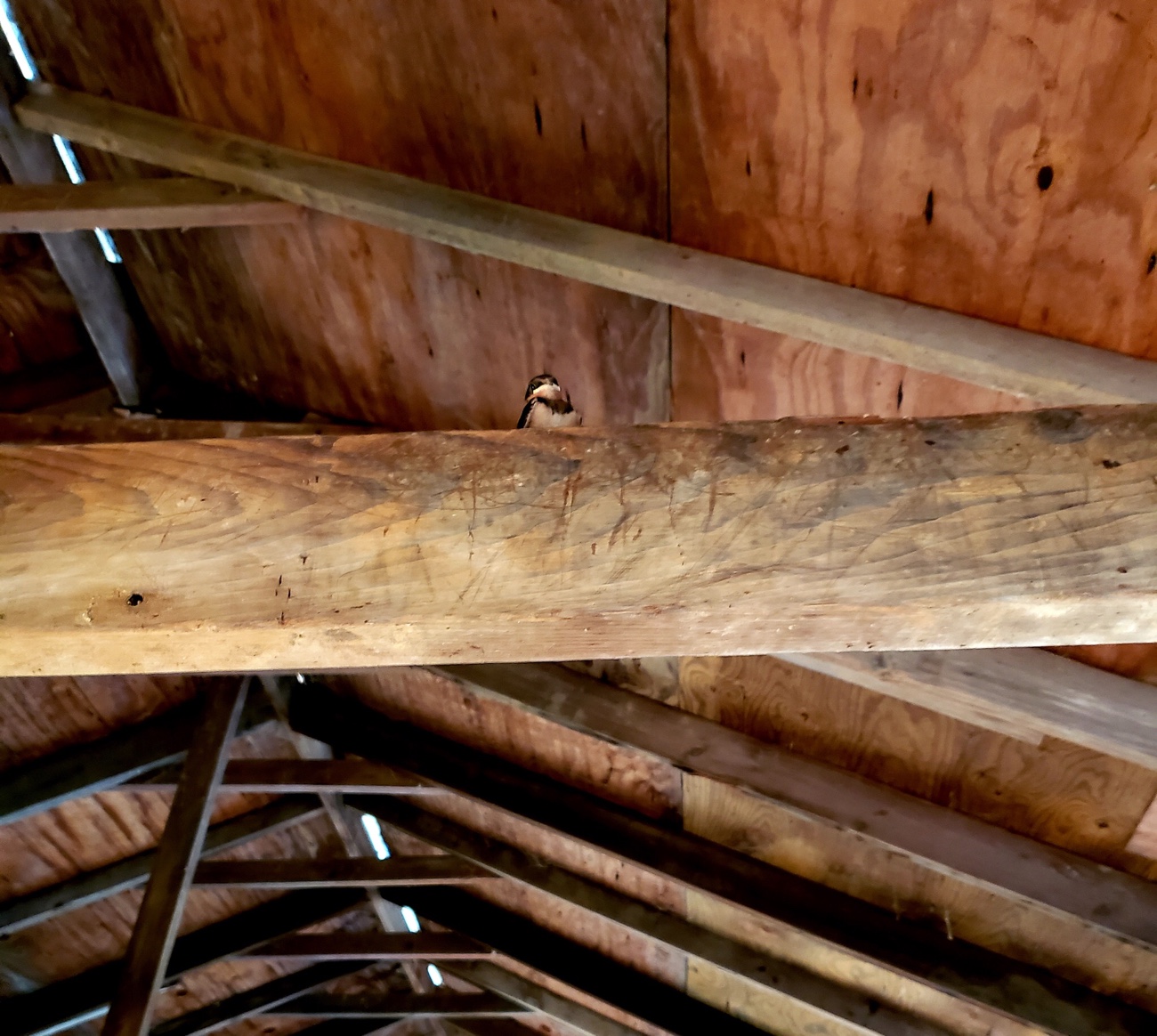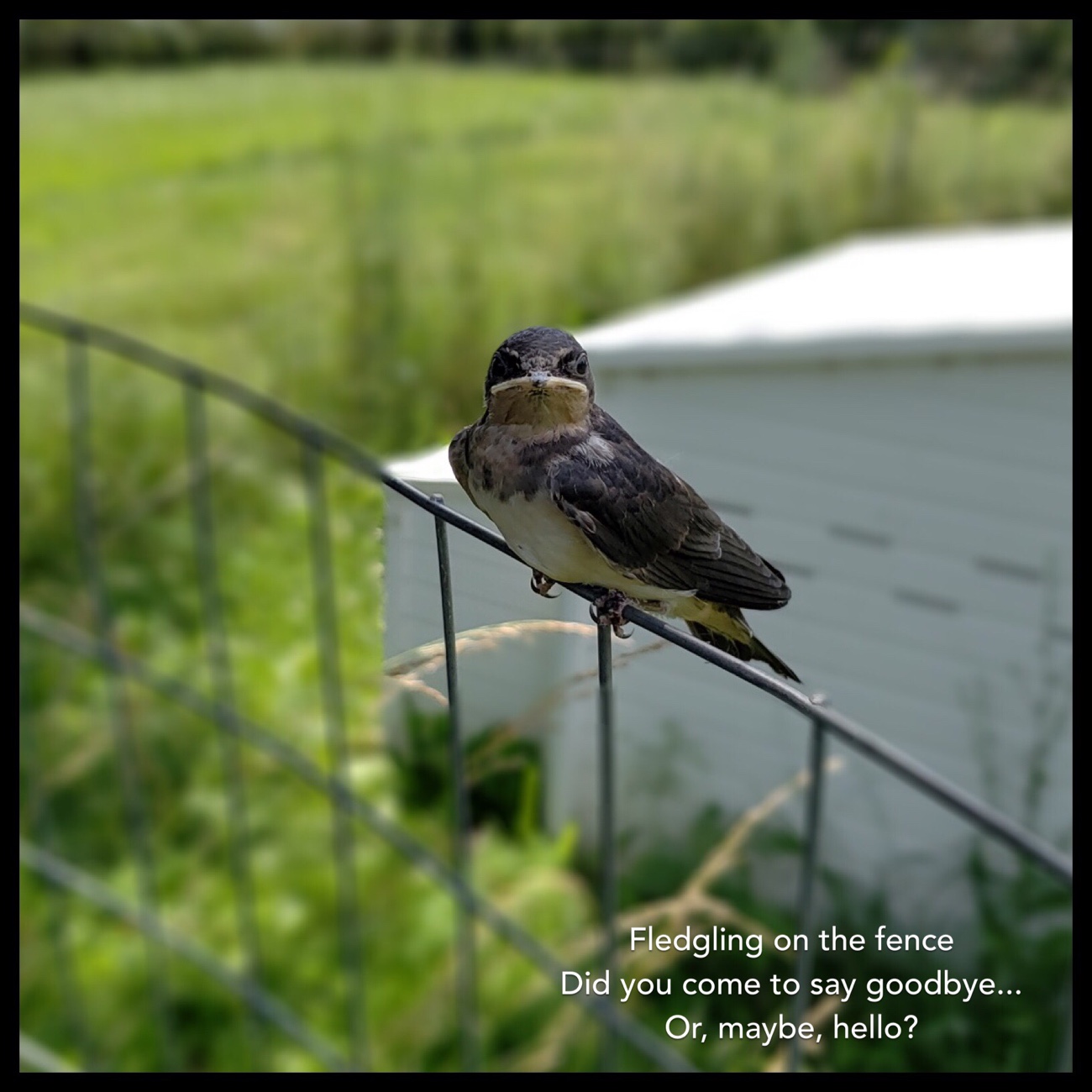
We’re lucky to have many wild bird visitors here, including cardinals, blue jays, finches, doves, indigo buntings, kestrels, and hummingbirds. Last summer, barn swallows built a nest in the barn’s rafters and hatched babies.
Barn swallows’ flying skills are stunning – they’re constantly swooping, turning, skimming. They catch bugs (and sometimes eat them) while in flight, so they’re fast and incredibly maneuverable. At the height of summer, they feast on the many flying insects.
A pair built a nest high up in the old barn’s rafters. I heard some chirping overhead one day and looked up to see the nest, with a parent looking down at me. I then made a mental note not to walk directly under that nest.
Not long after, peeping came from the nest: babies had hatched! We could see a few of the distinctive baby bird maws, which gaped open whenever the parents were nearby. The parents were busy bringing food to those babies, who never seemed to grow full. At the height of summer, the fields were heavy with bugs, and we were happy to watch the swallows diving for them. A veritable bug smorgasbord!
Then, one day, I looked up and saw that one of the babies had fledged, and was sitting on a rafter near the nest. Another was farther away, and must have flown there. A third was sitting in the nest, like it was working up courage. They were starting to explore their world. I knew that also meant they would leave their nest, permanently. And they did.

After the babies left, I would still see the family of five catching bugs, mid-air, near the barn where the babies hatched. They seemed to be out there most reliably in the evenings, and it was fun to watch them zoom around as we tended to the evening animal chores.
One little baby swallow even perched on a fence near me one day. I knew it was one of the youngsters because it still had that extra-wide baby mouth (called a gape flange). S/he looked me right in the eye. They had, after all, seen us daily for months, so we felt like we knew them.

As fall fell into winter, the swallows were nowhere to be found. The nest is exactly as they left it in the barn, so maybe another pair will raise their family in it this summer. And I’ll be looking up into the rafters, hoping to see them.
